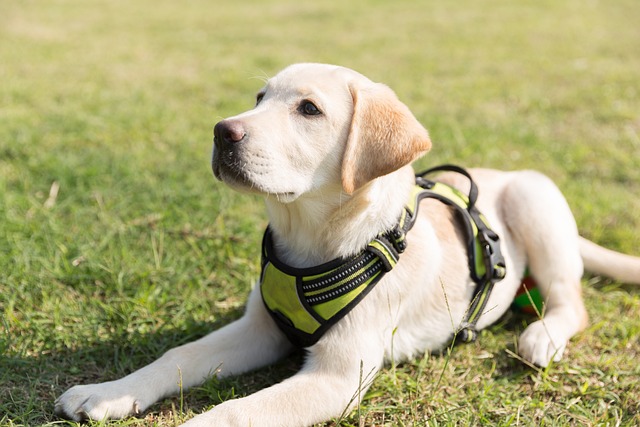
How to guide your dog to urinate and defecate outside?
Puppy pads scattered across the kitchen, a surprise pile behind the couch, the frantic scramble to clean before guests arrive—house-training struggles feel universal.
Walk into any pet store, and you’ll see aisles of gadgets promising to “fix” your dog’s behavior: prong collars, shock remotes, “training” spray bottles. Last month, a new dog parent in Phoenix texted me a photo of her cart—stuffed with these tools—and asked, “Am I missing something?” If you’re staring down that same shelf, wondering what you actually need to teach your dog to sit, stay, or come when called, let’s cut through the noise. Obedience training isn’t about gadgets that “control” your dog—it’s about building communication, and the right tools make that conversation clearer, not louder.
Let’s start with the basics: a well-fitted collar or harness and a sturdy leash. Skip the choke chains or shock collars—vets and behaviorists agree they teach fear, not understanding. A flat collar (for calm dogs) or front-clip harness (great for pullers) works best. The harness redirects energy gently, so when your dog lunges at a squirrel, they turn toward you instead of dragging you—like a friendly nudge in a conversation. Pair it with a 4- to 6-foot leash (no retractable ones—they make consistency impossible). My neighbor in a Chicago apartment swears by this combo: her 1-year-old pit bull mix used to yank her into walls, but with the harness and short leash, their hallway training sessions (5 minutes, twice a day) turned into polite “sit” and “stay” practice.
Next, you need tools to “pay” your dog for good behavior—because positive reinforcement is how dogs learn fastest. Grab a bag of high-value treats: small, smelly bits like freeze-dried chicken or cheese (no big chunks—you want quick rewards). A treat pouch clipped to your belt keeps them handy; fumbling in your pocket while your dog is offering a perfect “sit” misses the moment. Add a clicker (or a verbal “yes!” if clickers feel awkward) to mark the exact second they do something right. A friend in Austin trained her beagle with a clicker: every time the pup sat when asked, click + treat. By week three, he’d tilt his head, waiting for the cue—no yelling, no stress.

You’ll also need gear to set your dog up for success in different spaces. A portable mat or towel gives them a “home base” for “down” or “stay”—critical in busy areas like parks or sidewalks. A durable toy (like a Kong) can teach “leave it”: show the toy, say “leave it,” and reward when they look at you instead. In apartments, this doubles as quiet-time training—no begging at the dinner table if they learn to “stay” on their mat with a toy.
Now, let’s tie this to what’s expected in your community. First, legal basics: your dog’s collar must have their ID tag and current rabies vaccine info—required by law in every U.S. state. When training in public (like a neighborhood park), always carry poop bags (fines for forgetting hit $200 in cities like Seattle). Stick to low-traffic times if you’re in an apartment complex—no 7 a.m. “come” drills that wake the third floor. And remember: punishment (yelling, hitting, or using those shock collars) isn’t just ineffective—it’s against animal welfare norms across the U.S. and illegal in some states. Kindness isn’t a “soft” approach; it’s the fastest way to trust.
Here’s the secret: you don’t need much. I trained my own rescue dog with a $15 harness, a $5 leash, a bag of treats, and a clicker from the dollar store. He now sits politely at coffee shops and comes when called, even with squirrels darting by. The tools matter, but not as much as consistency: 5-minute sessions, twice a day, with more praise than frustration.
At the end of the day, the best equipment is whatever helps you communicate clearly and rewards your dog for trying. Leave the fear-based gadgets on the shelf—your dog wants to learn, and you’ve got everything you need to teach them.

Puppy pads scattered across the kitchen, a surprise pile behind the couch, the frantic scramble to clean before guests arrive—house-training struggles feel universal.

It’s a familiar morning scene for many new dog owners: you walk into the kitchen to find your pup’s nose buried in the trash can, cereal boxes torn open and banana peels scattered across the floor.

Watching a tiny Yorkie or Chihuahua dart toward the door instead of squatting on the rug feels like a win—but getting there takes time, and every pup moves at their own pace.

Puppies have tiny bladders, and when you live in an apartment with no yard or during harsh winters that make outdoor trips tricky, indoor potty training becomes a necessity.

Many new dog parents see agility videos—dogs zipping through tunnels, leaping over hurdles—and think, “We could never do that at home.”

Ever called your dog in the park, only for Fido to pretend he’s suddenly deaf? Or struggled to get him off the sofa when guests arrive? You’re not alone.